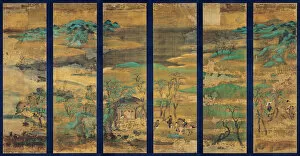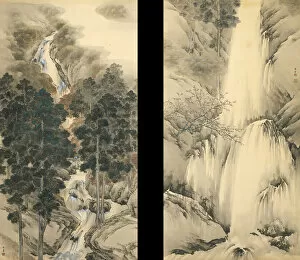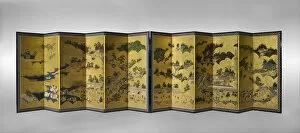Japanese Folding Screens Collection (#2)
Japanese folding screens, also known as byobu, are exquisite works of art that have been treasured for centuries
For sale as Licensed Images
Choose your image, Select your licence and Download the media
Japanese folding screens, also known as byobu, are exquisite works of art that have been treasured for centuries. These screens serve not only as decorative pieces but also as functional room dividers. With their intricate designs and rich history, they offer a glimpse into the culture and artistic traditions of Japan. One notable example is the six-section folding screen depicting trees from the mid-17th century. This masterpiece showcases delicate brushwork and captures the beauty of nature in every panel. Another remarkable piece is the Nanban screen portraying the arrival of a Portuguese ship around 1600. Created by an anonymous artist, it reveals Japan's encounter with foreign cultures during this period. Battle scenes from the Tale of Heike, created anonymously in the first third of the 17th century, depict epic conflicts and heroic warriors. The attention to detail and dynamic composition make these screens captivating storytelling devices. In contrast to historical narratives, some screens portray serene moments like "Visiting a Hermit" by Kansetsu Hashimoto in 1930. This artwork invites viewers to contemplate solitude and introspection through its tranquil depiction. The irises folding screen from the 18th century showcases vibrant colors and meticulous rendering techniques that bring these flowers to life on silk panels. For those fascinated by marine life, there is a whale-themed folding screen from 1797 that captures both its grandeur and mystery. Another Nanban screen shows Portuguese Christians arriving in Japan around 1600—an intriguing glimpse into religious encounters during this era. Hoitsu Sakai's two-fold summer and autumn flower plants screens demonstrate his mastery over botanical illustrations with their precise details and harmonious compositions. An anonymous artist's portrayal of an exiled emperor on Okinoshima transports us back to ancient times when political turmoil shaped Japanese history. "The River Bridge at Uji, " created between 1568-1615 by an unknown artist, immortalizes a famous landmark while showcasing the delicate balance between man-made structures and nature.







